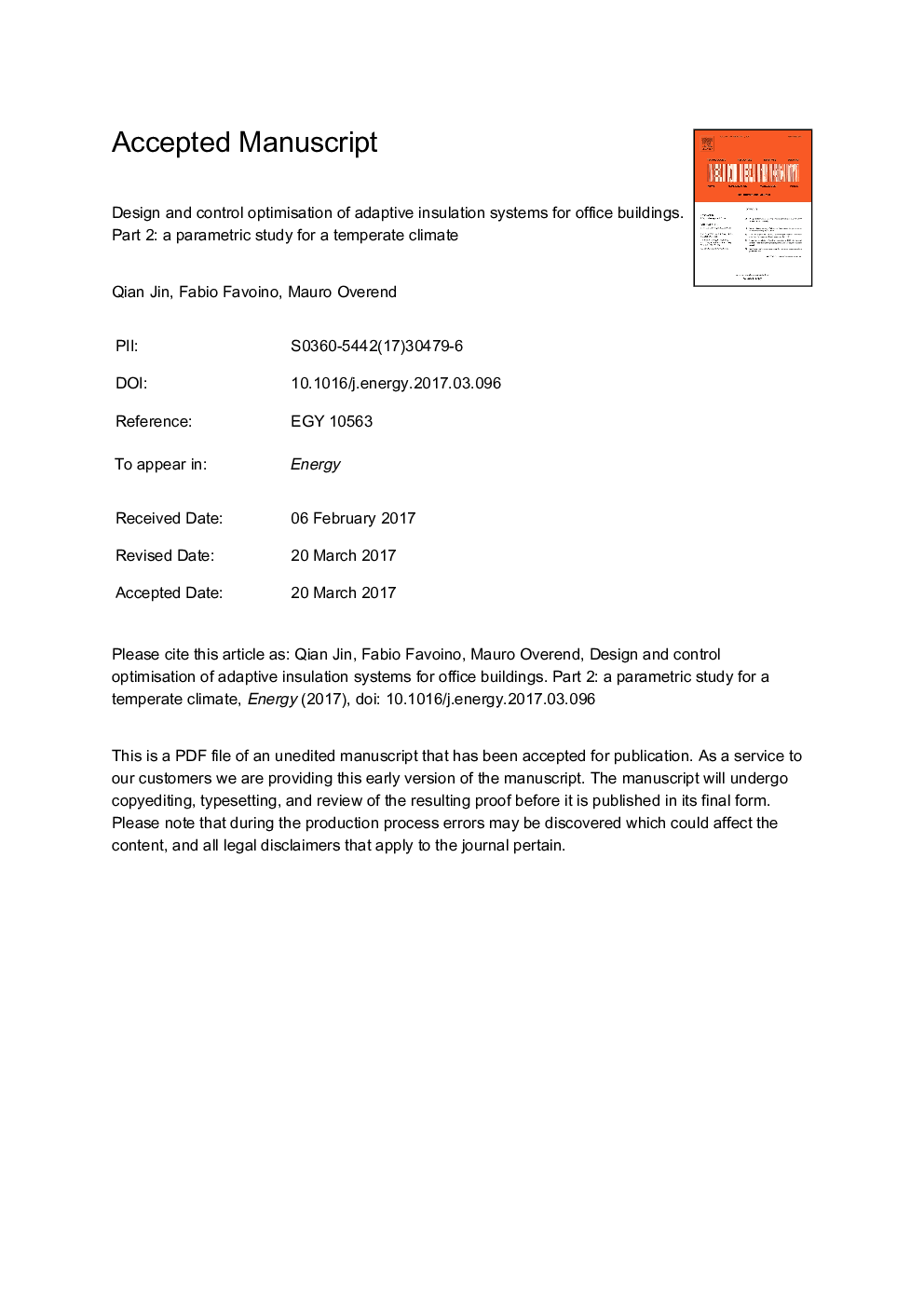| Article ID | Journal | Published Year | Pages | File Type |
|---|---|---|---|---|
| 5476838 | Energy | 2017 | 37 Pages |
Abstract
This paper is the second of a two part study, which aims to evaluate the performance of adaptive insulation. Part 1 proposes a simulation framework for optimising adaptive insulation design and control parameters, it describes its implementation, and validates the simulation strategy qualitatively. This second paper applies the simulation framework, by means of a parametric study on a specific building typology in a particular climatic region, to explore the potential of adaptive insulation in this context. Alternative adaptive insulation configurations and control strategies for opaque wall applications are evaluated, for an office room in a temperate climate of Shanghai, in order to optimise two design objectives: total primary energy saving and thermal comfort. It is found that adaptive insulation, when properly designed and controlled, has significant potential to improve both design objectives simultaneously. For the case study considered in this paper, yearly energy savings and thermal comfort improvements of up to 50% could be achieved by adaptive insulation compared to an equivalent astatic insulation alternative. The performance improvements of the adaptive insulation depend on the design choices (thermal mass, position of the adaptive insulation, switching range of insulation) and control strategy adopted.
Related Topics
Physical Sciences and Engineering
Energy
Energy (General)
Authors
Qian Jin, Fabio Favoino, Mauro Overend,
